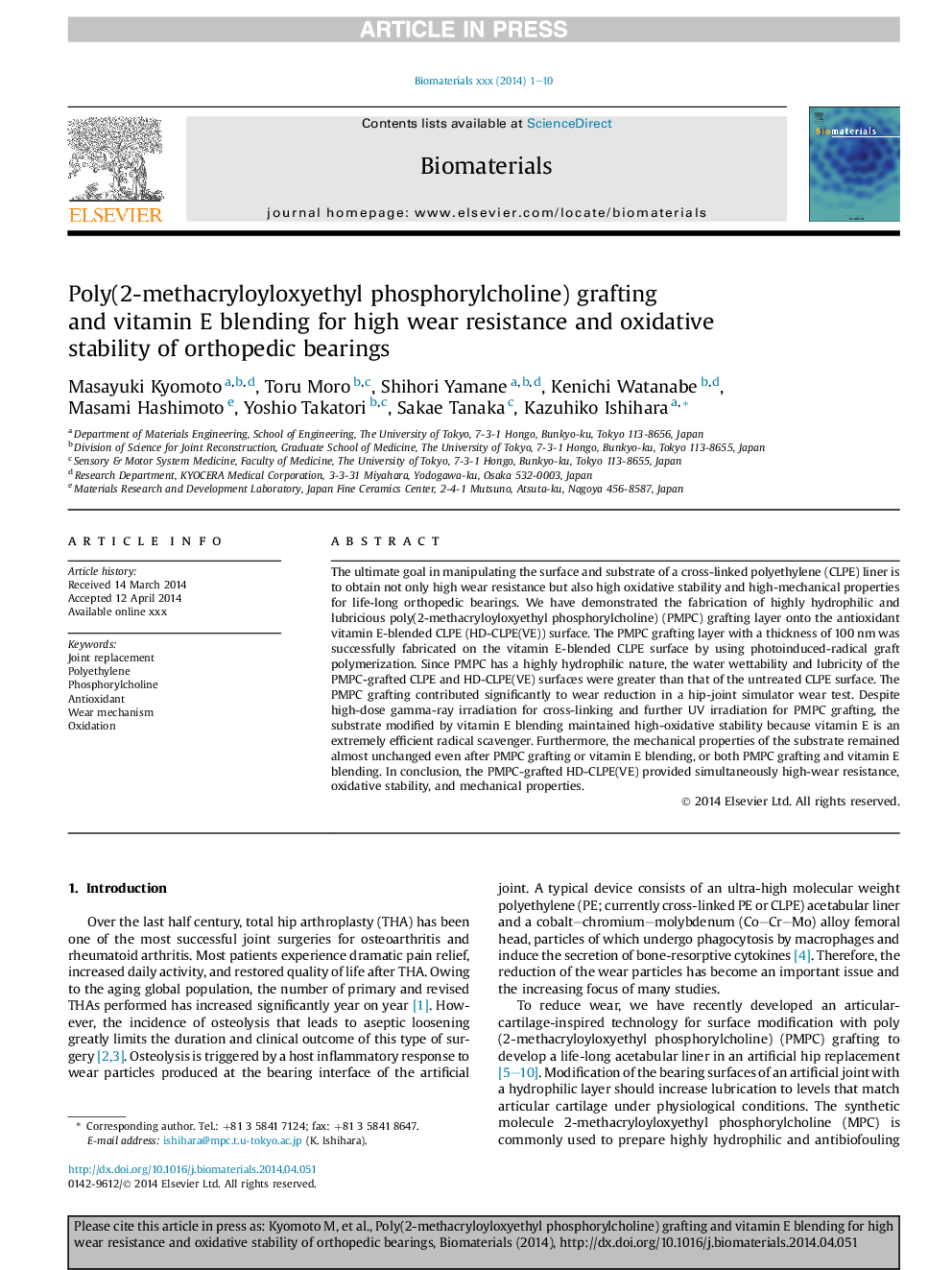| Article ID | Journal | Published Year | Pages | File Type |
|---|---|---|---|---|
| 10227494 | Biomaterials | 2014 | 10 Pages |
Abstract
The ultimate goal in manipulating the surface and substrate of a cross-linked polyethylene (CLPE) liner is to obtain not only high wear resistance but also high oxidative stability and high-mechanical properties for life-long orthopedic bearings. We have demonstrated the fabrication of highly hydrophilic and lubricious poly(2-methacryloyloxyethyl phosphorylcholine) (PMPC) grafting layer onto the antioxidant vitamin E-blended CLPE (HD-CLPE(VE)) surface. The PMPC grafting layer with a thickness of 100Â nm was successfully fabricated on the vitamin E-blended CLPE surface by using photoinduced-radical graft polymerization. Since PMPC has a highly hydrophilic nature, the water wettability and lubricity of the PMPC-grafted CLPE and HD-CLPE(VE) surfaces were greater than that of the untreated CLPE surface. The PMPC grafting contributed significantly to wear reduction in a hip-joint simulator wear test. Despite high-dose gamma-ray irradiation for cross-linking and further UV irradiation for PMPC grafting, the substrate modified by vitamin E blending maintained high-oxidative stability because vitamin E is an extremely efficient radical scavenger. Furthermore, the mechanical properties of the substrate remained almost unchanged even after PMPC grafting or vitamin E blending, or both PMPC grafting and vitamin E blending. In conclusion, the PMPC-grafted HD-CLPE(VE) provided simultaneously high-wear resistance, oxidative stability, and mechanical properties.
Related Topics
Physical Sciences and Engineering
Chemical Engineering
Bioengineering
Authors
Masayuki Kyomoto, Toru Moro, Shihori Yamane, Kenichi Watanabe, Masami Hashimoto, Yoshio Takatori, Sakae Tanaka, Kazuhiko Ishihara,
